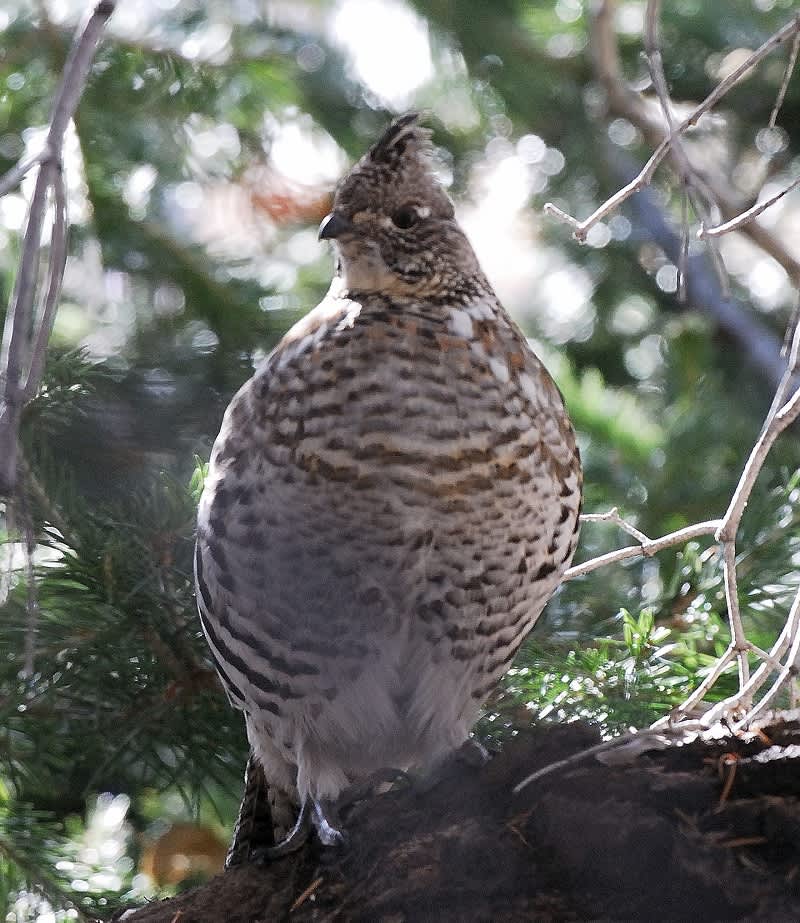Utah’s 2013 Forest Grouse Hunt Isn’t Over Yet
Utah Division of Wildlife Resources 12.06.13

Once the snow hits, a few small changes can help you find and take birds
December can be a great month to hunt forest grouse in Utah.
As the state’s big game hunts wind down, upland game hunters have more of the mountains to themselves. For forest grouse hunters, that means more time in higher elevations during the last month of the hunt.
Utah’s forest grouse hunt ends Dec. 31. As the hunt enters its final month, Jason Robinson, upland game coordinator for the Division of Wildlife Resources, says reports he’s received from hunters indicate good numbers of dusky grouse have been found this fall. Finding ruffed grouse has been “hit and miss,” he says.
Robinson likes hunting forest grouse because the birds’ habitat is in small pockets, which hunters can easily focus on. Once you know where to look, you won’t have to spend energy covering large expanses of land—even if you don’t have a dog.
Target a species
Robinson says some hunters may not know that the two different species, dusky grouse and ruffed grouse, split up in the winter.
Earlier in the season, you can find both birds in areas that have mixed stands of aspen and pine trees. Later in the season, you should target one bird or the other.
In the winter, forest grouse don’t have to stay near a water source. This means their top priorities are food and shelter. While most wildlife migrate to lower elevations in the winter, dusky grouse do just the opposite—they move up the mountain. To find dusky grouse, look for ridgelines that have spruce and fir trees on them.
Ruffed grouse, on the other hand, stay near aspen tree stands that have a mix of both young and mature trees.
Although the birds move for the winter, they don’t travel very far. “They have small home ranges,” Robinson says. “In the winter, you’ll find them in the same general area you found them earlier in the season.”
Time the hunt right
Hunting early in the morning was important when the season started, but you can wait until midmorning or midafternoon now. When winter hits, it takes the grouse longer to start moving.
Robinson encourages you not to pursue birds late into the afternoon, though. Hunting later in the day pushes the grouse away from their roost site. As the group tries to make its way back to its roost site before darkness falls, the birds don’t have enough time to settle in for the night and calm down after a day of being disturbed.
Use the right tools
When pursuing forest grouse, hunters usually shoot 6 shot out of a 12- to 28-gauge shotgun. Because most of the shots will be fairly close, Robinson suggests using an open choke.
Stay safe
While looking for forest grouse, it’s not unusual to be in elevations higher than 7,000 feet. Make sure your boots have good traction, wear warm clothes and take plenty of water.
“Know where you’re going,” Robinson says, “and be prepared for the conditions there.”
Free guidebook
More information about hunting forest grouse in Utah, including a distribution map that will give you a general idea where dusky and ruffed grouse are found in the state, is available in the 2013 – 2014 Utah Upland Game and Turkey Guidebook.
The free guidebook is available at www.wildlife.utah.gov/guidebooks.

